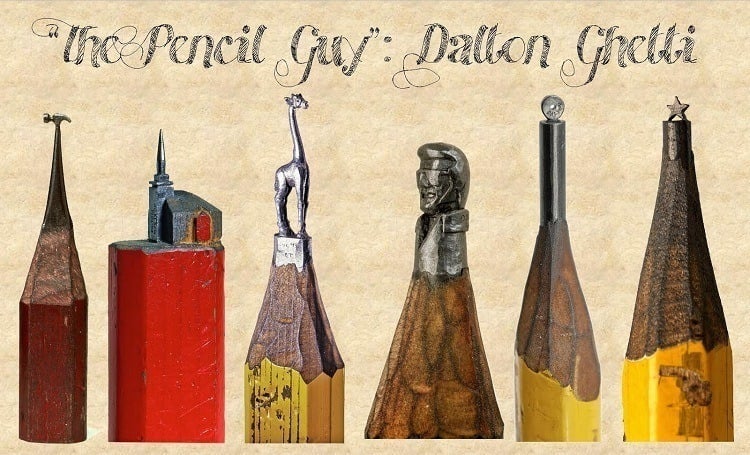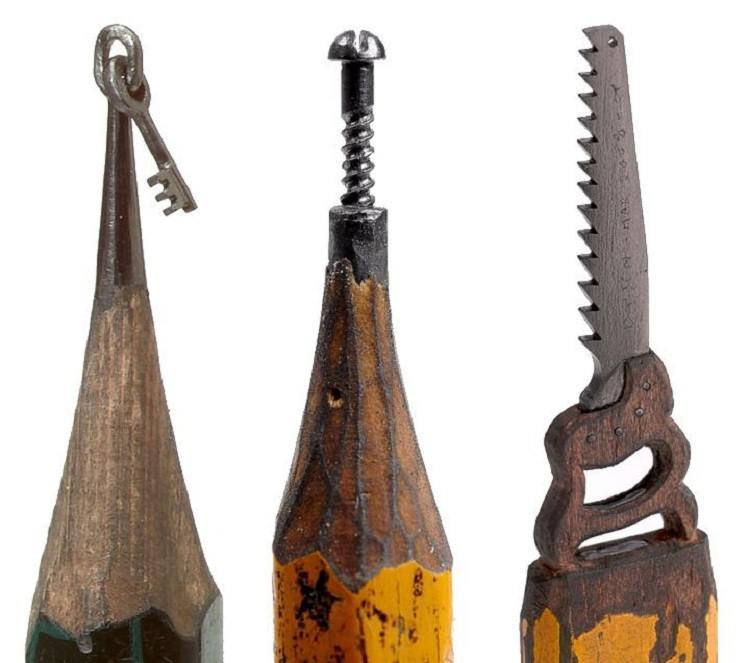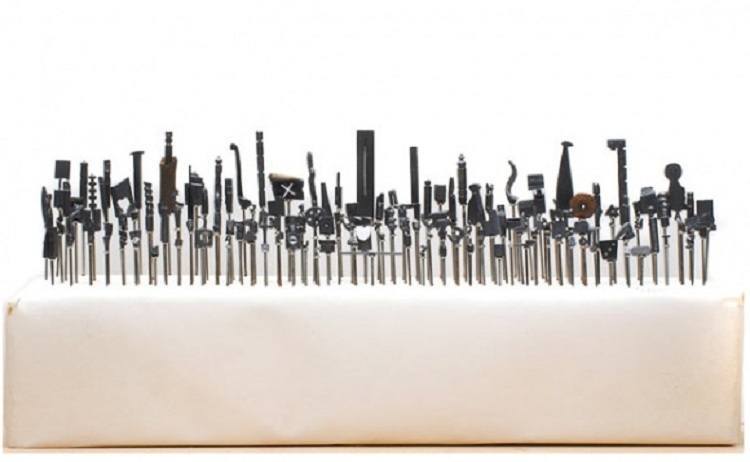Rejecting the notion that great art means big art, micro sculptures and their creators prove that some of the best innovations are almost invisible.

Some of Dalton’s most popular pieces. Source: Original Paints
If we take a look at art throughout history, it becomes quite clear that cultures around the world have associated size with value. A giant block of stone enters the studio of a talented sculptor and emerges, almost as if by magic, as a larger-than-life testament to the human form. A painter stares at his subject, and with a certain combination of small brush strokes creates a portrait so imposingly grandiose that it can only be hung in a cathedral or palace.
While floor-to-ceiling frescos and sculptures are diminishing in terms of popularity, one constant remains: as a matter of survival, artists are always looking to innovate. One of the most impressive recent trends in art is microsculpting, a practice where artists create incredibly small works of art that are sometimes invisible to the naked eye.
Dalton Ghetti
We start off with Dalton Ghetti, a Brazilian artist who uses graphite pencils when creating his work. Ghetti is able to create incredibly detailed microsculptures, typically using only the tips of pencils. Particularly impressive is the fact that he relies on very basic tools: a needle, sculpting knife and razor blade.

Initially, Ghetti specialized in sculpting everyday items. Source: Propel Steps
Since Ghetti’s primary source of income is carpentry, he only has time to work on his microsculptures in his down time. Consequently, this means Ghetti can can spend months or even years on a single piece.
It also means that one tiny mistake could ruin the entire effort. And that happens—a lot. In fact, Ghetti has a special place he calls “the cemetery collection”, which contains over 100 rejects. Despite his recent prominence, Dalton Ghetti hasn’t tried to sell any of his art pieces, but he has given a few away to friends.

Some of the pieces that didn’t make it. Source: Accidental Mysteries





